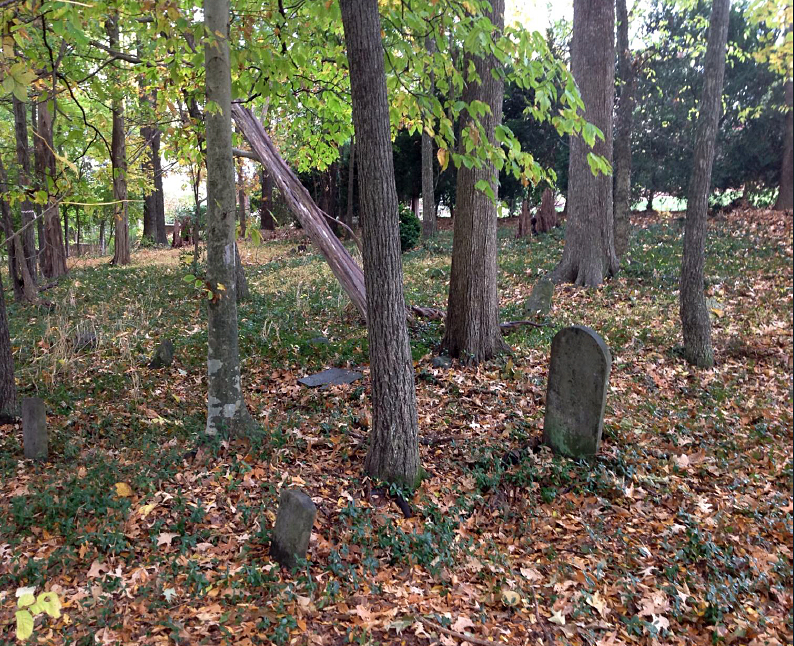Carolina to Study Enslaved People Buried at Barbee Cemetery
Posted on March 24, 2021
UNC’s Commission on History, Race and a Way Forward has asked Kenan-Flagler to delay updating existing cemetery markers until research can be done about the enslaved people on the Barbee property.
UNC’s Commission on History, Race and a Way Forward and Kenan-Flagler Business School are working together to honor the approximately 120 enslaved people buried in Barbee Cemetery.
“One of the commission’s overarching concerns is to change the way that the story of slavery is told and reaffirm the humanity of the people held in bondage,” said Jim Leloudis ’77 (’89 PhD), commission co-chair and professor of history. “The Barbees and the people they enslaved played an important role in the early history of the University and greater community.”
Kenan-Flagler “came to us with their concerns and wish to properly acknowledge the graves and lives of the enslaved people buried in Barbee Cemetery,” said Leloudis, who also is the Peter T. Grauer associate dean for Honors Carolina. “We appreciate the business school’s leadership on this project. It’s important to the University and the local community, most especially to people who are descendants of those enslaved on the Barbee farm.”
The commission has asked Kenan-Flagler to delay updating existing cemetery markers until research can be done about the enslaved people on the Barbee property.
Christopher “Old Kit” Barbee was the largest landowner in Orange County in the late 1700s, and part of his donation of 221 acres became the infant University’s first two quads, McCorkle and Polk places.
Barbee’s home was three miles east of that area of campus at what is now Meadowmont, the site of Kenan-Flagler’s Rizzo Conference Center.
Mary Hargrave, Barbee’s great-granddaughter, married William Rand Kenan Sr. in 1864, the same year Kenan graduated from UNC. In 1991, the business school was named in honor of their eldest child, Mary Lily Kenan, and her first husband, Henry Morrison Flagler.
Chancellor Kevin Guskiewicz said the 15-member commission, which he convened in January 2020, “is doing critical work to tell the truthful stories of our University’s past and to ensure that underrepresented voices are always heard. The Barbee Cemetery Project is part of our University’s story, and I am grateful to the commission and to UNC Kenan-Flagler Business School for their partnership. Through our strategic plan, Carolina Next: Innovations for Public Good, we are committed to the work of building our community together, and this project is one of many important steps we are taking to reckon with our history.”
Patricia Parker, commission co-chair, said, “The Barbee Cemetery project is vital as we explore, engage and teach UNC’s history with race, and provide recommendations to the chancellor on how we as a University community must reckon with the past.” Parker also is a professor and chair of UNC’s department of communication. “We are recovering the lost stories about our history and bringing new voices to tell those stories.”
Doug Shackelford ’80, dean of Kenan-Flagler, said, “Appropriately recognizing and honoring the enslaved people buried in Barbee Cemetery is of great importance to the UNC Kenan-Flagler community, and while we feel an urgency to address it, we value the significance of the work of the University Commission on History, Race and a Way Forward and their thoughtful, historical approach to understanding and sharing the stories of the people buried there.”
A community advisory board has been formed for this project. Its members include Black descendants of the Barbee family and other community members representing the NAACP and the Orange County Community Remembrance Coalition, among other organizations.
Lorie Clark, a Barbee descendant, said: “The Barbee heirs are partnering with [UNC’s] Commission on History, Race and a Way Forward and the UNC Kenan-Flagler Business School because we share their commitment to bringing light to the local histories and contributions of Black community members. Often people impacted are excluded from processes and decisions. This partnership allows us to include our stories and honor our ancestors.”
The process includes:
• Collaborating with community and campus partners to research the history of the people enslaved by the Barbee family and the history of their descendants;
• Making recommendations to appropriately acknowledge and teach that history;
• Partnering with Kenan-Flagler and UNC’s facilities department to develop appropriate signage and a curatorial plan for the Barbee cemetery;
• Making recommendations for appropriate care and upkeep of the cemetery; and
• Identifying and assessing other University-related sites that require similar attention.
Leading the Barbee Cemetery project are commission members Dawna Jones, assistant dean of students and chair of the Carolina Black Caucus; and Seth Kotch ’05 (’09 PhD), associate professor in the department of American studies and director of the Southern Oral History Program. They plan to:
• Collect information about the cemetery and about the history of race in Chapel Hill and Carrboro and at Carolina and present it in a clear, accessible fashion off and on campus;
• Study effective commemoration efforts and create a process, in consultation with community partners, to commemorate the lives of the enslaved people buried in the cemetery through a recurring remembrance ceremony that could serve as a blueprint for similar events at other burial sites;
• Conduct an oral history project with white and Black descendants of the Barbee and Hargrave families, other Black residents of Chapel Hill and Carrboro, and University staff. They plan to archive the interviews at UNC and stage them at various spaces in town;
• Make recommendations in support of a commitment by Carolina and Kenan-Flagler to mark and maintain the cemetery properly to include signage, accessible pathways and grave markers as well as acknowledge and reckon with the history associated with this property; and
• Make recommendations for a commitment by Carolina to address its relationship with slavery by considering redistribution of campus resources to substantive programs that promote equity on and off campus.
